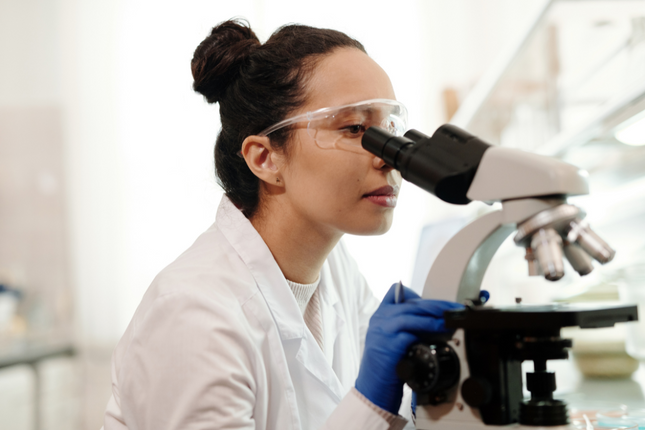On 11 February, we will celebrate another International Day of Women and Girls in Science.
While the names of women scientists like Marie Curie (who discovered radium) and Ada Lovelace (who contributed, with Charles Babbage, to building an early computer model) might roll off our tongues with ease, history has thrown up many eminent women in science whose names might not be as familiar. Why do we need to hear more about these women? What will that do to our emerging women scientists?
Throughout history, women have struggled for recognition in science despite making ground-breaking discoveries. And current experience shows that limiting research to just that by men can skew the results. From seatbelt design that failed to take the relative heights of men and women into consideration to cancer treatments that work on multiple protocols that include height, weight and BMI, women’s input is vital. And as you’ll see from some of our examples, women look at things differently to reveal astonishing truths.
Let’s take a look at ten women whose names we should know as well as that of Marie Curie.
1 Rosalind Franklin
Franklin, who did revolutionary work in discovering the double helix structure of DNA, died a few years before her male colleagues were awarded the Nobel Prize for this work. Before her work on DNA, Franklin was integral to the World War II efforts in revealing the properties of carbon, vital for equipment like gas masks.
2 Dorothy Hodgkin
Dorothy Hodgkin was an Oxford scholar who achieved a First Class honours degree in chemistry in 1932. After obtaining her PhD from Cambridge in 1936, Hodgkin researched the architecture of cholesterol and examined the structure of penicillin, essential to creating a synthetic version that was so critical during the war years. From the 1950s, she concentrated on the structure of insulin and built the first model of the insulin molecule. Hodgkin was awarded the Nobel Prize for Chemistry in 1964.
3 Sophia Louisa Jex-Blake
Born in 1840, Sophia Louisa Jex-Blake was home-schooled until the age of eight and obtained a job as a tutor in mathematics to young girls. In 1869, she published an essay, ‘Medicine as a profession for women’ and thereafter fought, along with six other women, for the right of women to join the medical profession as doctors. The women finally won their case in 1873. Jex-Blake then decamped to London to found the London School of Medicine for Women. Continued opposition led members of parliament to champion a private member’s bill to enable women to qualify in medicine. Jex-Blake went on to found other institutions for women
4 Katherine Johnson
Katherine Johnson, a mathematician who worked on NASA’s early space missions, was one of the “computers” who solved equations by hand during NASA’s early years. Overcoming racial discrimination, she and other black women on the project computed all the rocket trajectories and landings. In 1961, Johnson manually verified computer modelling of John Glenn’s orbits around Earth. Katherine Johnson was awarded the Presidential Medal of Freedom, the highest civilian honour in the US, in 2015.
5 Cecilia Payne-Gaposchkin
Payne-Gaposchkin was the first person to discover the composition of stars. During a fellowship at Harvard College Observatory, Payne-Gaposchkin determined that hydrogen was far more prevalent in our universe than conventional wisdom believed. This fundamental discovery disregarded at first, has had profound implications for the way in which we view the universe.
6 Lise Meitner
By the 1930s Lise Meitner was the foremost nuclear scientist in Germany. Being Jewish, she was forced to flee the country after Hitler’s rise to power. In Stockholm, she realised that uranium decay was actually nuclear fission, releasing energy. Seven years later, that process was used in the first nuclear bomb.
7 Grace Hopper
Grace Hopper, a gifted mathematician, aimed to demystify computing for the general public through the development of a computer language, COBOL, which was based on English words rather than binary code. Her legacy is that computing is now commonplace and accessible.
8 Jane Goodall
Working and taking notes alongside chimpanzees, Jane gained the trust of the chimpanzees, enabling her to witness animal behaviours that defied existing assumptions. Her research has changed our attitudes towards wildlife and conservation radically.
9 Bibha Chowdhuri
Bibha Chowdhuri, an Indian physicist who researched particle physics and cosmic rays, discovered that when the particle density of an air shower increases, so does the density of penetrating events. For her research work, and courtesy of the International Astronomical Union she has a star “Bibha” named after her.
10 Katsuko Saruhashi
Japanese geochemist Katsuko Saruhashi developed the first method and tools for measuring carbon dioxide in seawater, with a table named after her. Her pioneering work showed that the Pacific Ocean releases twice as much carbon dioxide as it absorbs, meaning that global warming cannot be indicating that global warming could not be substantially mitigated by seawater’s capacity to absorb carbon dioxide.
Want to learn more about making the most of your next 30 years?
We’re committed to making life better for the over 55s. Check out downsizing.com.au for more insights and great advice on living life to the fullest.


